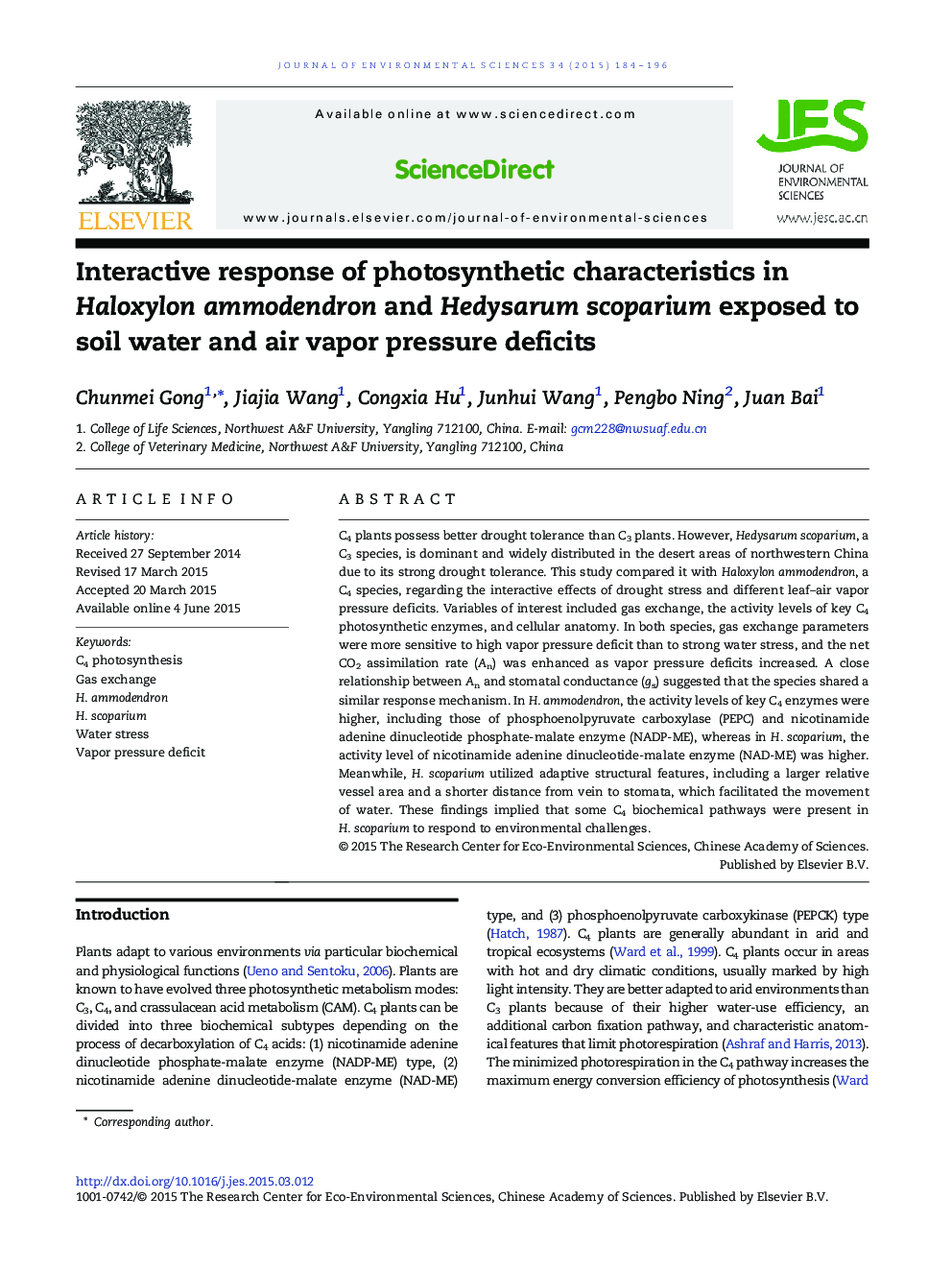| Article ID | Journal | Published Year | Pages | File Type |
|---|---|---|---|---|
| 4454026 | Journal of Environmental Sciences | 2015 | 13 Pages |
C4 plants possess better drought tolerance than C3 plants. However, Hedysarum scoparium, a C3 species, is dominant and widely distributed in the desert areas of northwestern China due to its strong drought tolerance. This study compared it with Haloxylon ammodendron, a C4 species, regarding the interactive effects of drought stress and different leaf–air vapor pressure deficits. Variables of interest included gas exchange, the activity levels of key C4 photosynthetic enzymes, and cellular anatomy. In both species, gas exchange parameters were more sensitive to high vapor pressure deficit than to strong water stress, and the net CO2 assimilation rate (An) was enhanced as vapor pressure deficits increased. A close relationship between An and stomatal conductance (gs) suggested that the species shared a similar response mechanism. In H. ammodendron, the activity levels of key C4 enzymes were higher, including those of phosphoenolpyruvate carboxylase (PEPC) and nicotinamide adenine dinucleotide phosphate-malate enzyme (NADP-ME), whereas in H. scoparium, the activity level of nicotinamide adenine dinucleotide-malate enzyme (NAD-ME) was higher. Meanwhile, H. scoparium utilized adaptive structural features, including a larger relative vessel area and a shorter distance from vein to stomata, which facilitated the movement of water. These findings implied that some C4 biochemical pathways were present in H. scoparium to respond to environmental challenges.
Graphical abstractModel of the mechanism of photosynthesis enhancement in H. scoparium by performing some C4 biochemical pathways to respond to environmental drought. The reduced distance from vein to stomata can facilitate supplying water to bundle sheath cell in rachis of H. scoparium. C4 key enzyme PEPC fixed CO2 via stomata to produce four-carbon malate in the mesophyll cells in the rachis. And malate moved into the bundle sheath cells and decarboxylated by NAD-ME. Then CO2 is refixed by Rubisco in bundle sheath cells and then increases the net CO2 assimilation rate. H. scoparium has evolved some typical C4 anatomical and biochemical characteristics such as larger vessel area, reduced distance from vein to stomata, and increased key C4 enzyme activities to enhance net CO2 assimilation rate in this study. MA, malate; PEPC, PEP carboxylase; NAD-ME, NAD-malic enzyme.Figure optionsDownload full-size imageDownload as PowerPoint slide
